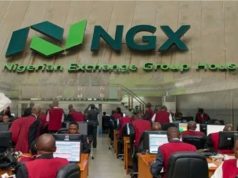TUE 14 SEPT, 2021-theGBJournal- Organization of the Petroleum Exporting Countries (OPEC) published its Monthly Oil Market Report (September 2021) Monday, forecasting world oil demand to increase by 6.0mb/d, unchanged from last month’s projections and despite offsetting revisions within the quarters.
OPEC said: An upward revision due to positive mobility indicators for OECD countries in 3Q21 was offset by a downward revision to 4Q21, given the risk to oil demand fundamentals stemming from the increase in COVID-19 cases, primarily related to the Delta variant. World oil demand is estimated at 96.7 mb/d in 2021.
In 2022, world oil demand is forecast to rise by 4.2 mb/d y-o-y, revised higher by around 0.9 mb/d compared to last month’s report, as the pace of recovery in oil demand is now assumed to be stronger and mostly taking place in 2022. As vaccination rates rise, the COVID-19 pandemic is expected to be better managed and economic activities and mobility will firmly return to pre-COVID-19 levels.
The revisions are based in both the OECD and non-OECD regions, with steady economic developments expected to support the partially delayed recovery in oil demand in various sectors. As a result, the OECD oil demand outlook was revised upward by 0.3 mb/d in 2022 compared to last month’s projection and is projected to increase by 1.8 mb/d y-o-y. In the non-OECD region, oil demand in 2022 is estimated to increase by 2.3 mb/d y-o-y, revised higher by around 0.6 mb/d compared to last month’s estimations, supported by steady economic activities in the main economies, particularly China, India and Other Asia.
Additionally, ongoing improvements in vaccination rates and a potential increase in public confidence in managing COVID-19 is anticipated to be more widespread in 2022, further supporting the recovery of oil demand, particularly transportation fuels. World oil demand is estimated at 100.8 mb/d in 2022, exceeding pre-pandemic levels.
Meanwhile, main crude spot benchmarks fell to their lowest monthly average since last May, according to the report.
In August, North Sea Dated and Dubai’s first month dropped m-o-m by $4.19 and $3.46, respectively, or 5.6% and 4.8%, to settle at $70.80/b and $69.37/b. The WTI first month fell the most among benchmarks, declining by $4.85 m-o-m, or 6.7%, to settle at $67.73/b.
The OPEC Reference Basket (ORB) value fell by $3.20 on average in August to settle at $70.33/b, a m-o-m decline of 4.4%, and its largest drop since September 2020. ORB component values dropped on a sharp decline of their related crude benchmarks, offsetting a higher monthly change in their respective official selling price differentials for all components to the Asian market, and most components to the European market.
Crude oil futures prices on both sides of the Atlantic moved sharply lower during the first three weeks of August. They fell to their lowest levels since last May amid deteriorating market sentiment, as concerns about short-term oil demand outlooks in Asia, mixed economic data, and the prospects of higher global oil supply triggered a sharp sell-off. However, oil prices recouped some of their previous losses in the last week of August, after concerns about weakening oil demand eased. Large declines in US crude oil stocks and supply disruptions in Mexico and the Gulf of Mexico also contributed to support oil prices. The ICE Brent front-month in August fell m-o-m by $3.78, or 5.1%, to average $70.51/b, and NYMEX WTI dropped by $4.72 m-o-m, or 6.5%, to average $67.71/b. DME Oman crude oil futures prices declined by $3.42 m-o-m, or 4.7%, to settle at $69.31/b.
As oil prices dropped, hedge funds and other money managers extended the previous month’s sell-off and massively reduced their net long positions in the first three weeks of August, hitting their lowest level since November 2020.
Although the market structure of all three major oil benchmarks – ICE Brent, NYMEX WTI, and DME Oman – remained in backwardation, uncertainty about the short-term oil demand outlook, lower seasonal crude demand in Asia, and the prospect of rising global oil supply flattened the backwardation forward curves.
The sweet/sour crude differentials widened in Europe and the US Gulf Coast (USGC) on more robust margins of light sweet crudes compared to heavier crudes, and a plentiful supply of sour crude. Strong margins for naphtha and gasoline supported the value of light sweet grades. However, in Asia, the sweet/sour crude differentials narrowed as the sweet crude value fell more than that for sour crude.
Twitter-@theGBJournal|Facebook-The Government and Business Journal|email: govandbusinessj@gmail.com









